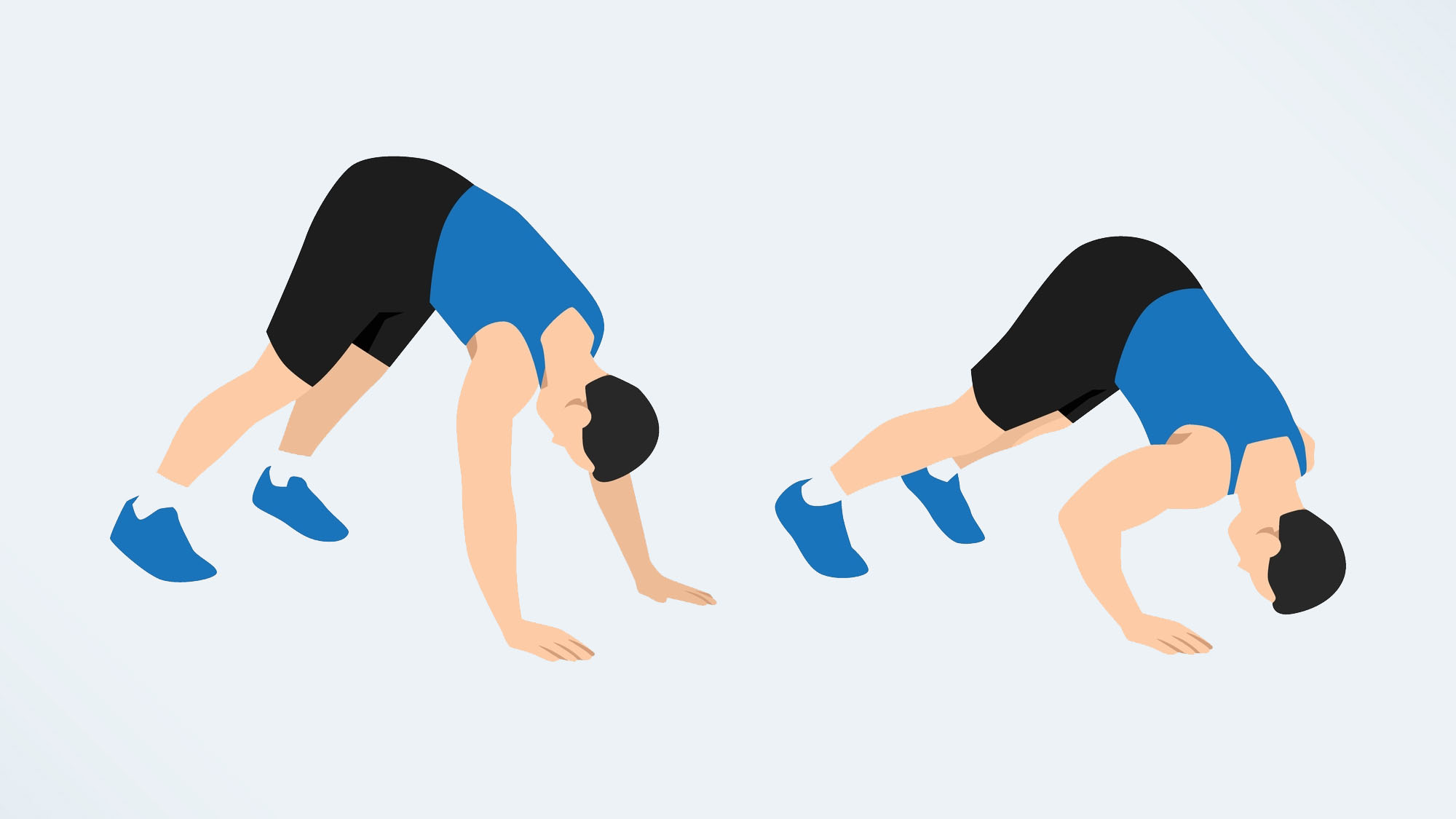
I’m (maybe) slightly pushy when it comes to giving my parents exercise advice, and there are five strength exercises I encourage (force) upon my loved ones to stay strong and mobile throughout the years.
You don’t need much equipment to do them, but I'd consider investing in a durable set of the best kettlebells or adjustable dumbbells so that you can increase the resistance for your muscles as you build strength. This means you won’t stop finding the moves challenging, as you can adapt the load, reps and sets to suit your needs.
If you’re ready to get started, check out the exercises and their benefits below.
1. Tip-toe farmer's walk
Your calf muscles are crucial for lower-body joint stability and help you to walk and run by supporting forward propulsion. Unlike calf raises, the tip-toe farmers walk relies on you maintaining plantar flexion, which means you’ll stay on the balls of your feet as you walk, maintaining contraction in your calves.
I’d opt for lighter weights to hold, as your balance and stability will be challenged during this variation, switching on all those small stabilizer muscles, including your core.
Focus on walking with a steady pace, holding two weights by your sides (as the video above demonstrates), then lift onto the balls of your feet and continue to walk this way. You can alternate between both to begin with, and slowly transition to a full tip-toe walk when you feel ready.
2. Prisoner squats

Prisoner squats engage more of your upper body and test thoracic mobility, as well as the range of motion in your hips, knees and ankles, to stay upright as you squat down. If you know you tend to lean forward during squats, signaling a lack of mobility, this is the squat variation to practice.
Get instant access to breaking news, the hottest reviews, great deals and helpful tips.
Prisoner squats involve placing your hands lightly behind your head while you perform squats. Try to sink your weight into your heels and lift your chest, lowering your butt as far as you can toward the ground.
Sometimes, I jazz things up by asking people to push the butt back at the bottom of the squat, then hinge forward at the hips and tilt the chest parallel to the ground, which looks like the bottom of the good morning exercise (pictured below); it’s a great way to engage the hamstrings; just remember to return to the squat position again before you drive up to stand.
As you get stronger, try wrapping a resistance band around the thighs or holding a weight behind your head.

3. Split squats
Split squats are more accessible for beginners who find lunges too difficult, because you won’t need to step forward or backward with each rep, which makes balancing easier. Instead, you’ll stand with your legs ready in the split lunge position, then focus on tapping your back knee to the floor and driving up to stand again.
Once you feel confident with both feet on the ground, see if you can elevate your back leg for a more challenging and glute-focused version of the exercise.
I ask my dad to hold weights in each hand; not only does this actually improve balance, but it adds load to the working muscles in the lower body.
I like to focus on something called eccentric loading, which, in this instance, means slowing down the lowering phase of the lunge, then driving up for one powerful beat. This could be three to four seconds or more. Looking for strong legs and glutes? This will do it. For more glute focus, try a slight lean forward while keeping your back straight.
4. Pike push-ups

Pike push-ups use your bodyweight to vertically load your shoulders and triceps, like an overhead press but upside down. This variation doesn’t require equipment and will test upper-body strength and hamstring and shoulder mobility.
Start in a downward dog and walk your hands and feet slightly closer together. Next, lean your weight forward, but keep your hips high; it’s not a push-up, so try to stay vertical. Tap the crown of your head down just in front of your hands, then drive back to downward dog.
5. Overhead squats

Like prisoner squats, overhead squats require more engagement from your upper body and test thoracic mobility, as well as squat depth. The idea is to keep your chest lifted and back straight throughout, with your arms locked overhead and arms close to your ears.
I recommend starting with bodyweight or light weights; I get my loved ones to hold a barbell plate with both hands. For an extra challenge, try unilateral movement, which means just holding a weight in one hand (see above) to test stability in each side of your body.
From here, you want to keep an upright torso as you perform a squat, keeping your weight firmly distributed through your feet using something called a tripod position; this means pressing through three points of contact: heels, big toes, little toes.
Your knees will want to cave in, so be aware of this, as well as your chest shooting forward. Over time, see if you can sit lower into the squat, and imagine a tray of drinks in your hands overhead that you don’t want to spill. Personally, I try to think of a gin martini balancing on my barbell plate, as those martini glasses are far from forgiving.

Follow Tom's Guide on Google News and add us as a preferred source to get our up-to-date news, analysis, and reviews in your feeds.
More from Tom's Guide
- Strength vs hypertrophy: what's the difference?
- High reps vs heavy weights: which is better for building muscle?
- The 5 best ways to build muscle without lifting heavier weights

Sam Hopes is a level 3 qualified trainer, a level 2 Reiki practitioner and fitness editor at Tom's Guide. She is also currently undertaking her Yoga For Athletes training course.
Sam has written for various fitness brands and websites over the years and has experience across brands at Future, such as Live Science, Fit&Well, Coach, and T3.
Having coached at fitness studios like F45 and Virgin Active and personal trained, Sam now primarily teaches outdoor bootcamps, bodyweight, calisthenics and kettlebells.
She also coaches mobility and flexibility classes several times a week and believes that true strength comes from a holistic approach to training your body.
Sam has completed two mixed doubles Hyrox competitions in London and the Netherlands and finished her first doubles attempt in 1:11.
You must confirm your public display name before commenting
Please logout and then login again, you will then be prompted to enter your display name.
